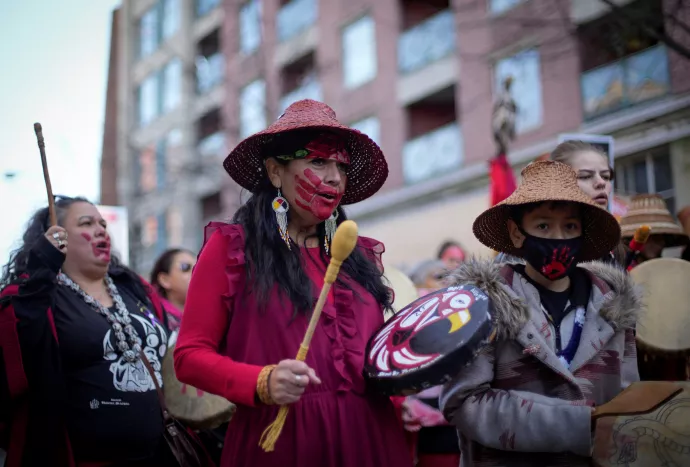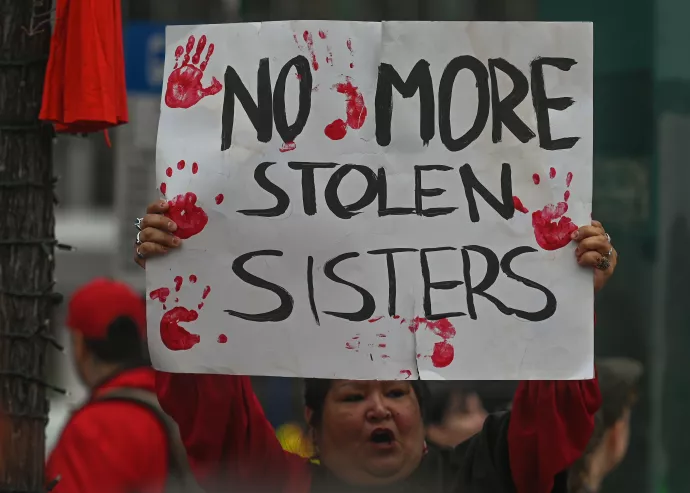'Overpoliced and underprotected': UTM study finds search for missing Indigenous women hampered by police apathy

Content warning: the following contains disturbing subject matter.
In Canada, research shows Indigenous women are 400 per cent more likely than other Canadians to go missing. The problem is so pervasive that the Canadian government does not know how many Indigenous women are missing or have been murdered.
Estimates suggest that around 4,000 Indigenous women and girls and 600 Indigenous men and boys have gone missing or been murdered between 1956 and 2016.
UTM sociologist Jerry Flores and graduate student Andrea Román Alfaro have been gathering testimony from Indigenous women and Two-Spirit individuals to try to identify the barriers faced when searching for missing and murdered friends and family.
The result is their article “Building the Settler Colonial Order: Police (In)Actions in Response to Violence Against Indigenous Women in ‘Canada.'”
While several studies have sought to identify why Indigenous peoples continue to disappear, few have looked at the role of police in violence against Indigenous women, girls and 2SLGBTQ+ people, says Román Alfaro, a sixth-year PhD candidate in sociology.
“The problem of Indigenous women being overpoliced and underprotected is all across Canada,” she says, citing a 2004 Amnesty International report.
For the new article, Flores — Román Alfaro’s PhD supervisor and a regular volunteer with Toronto’s Indigenous-led organizations — conducted close to 50 face-to-face interviews.
When COVID-19 restrictions blocked their ability to do more in-person work, Román Alfaro’s suggested including the 219 personal statements from the Canadian National Inquiry into Missing and Murdered Indigenous Women and Girls to expand their sample of respondents.
“The testimony of the women at the inquiry allowed us to see that in their stories, the narratives are all very similar,” she says. “Then we went looking for what is happening in society that lets this happen.”
Román Alfaro helped code the respondents’ stories to identify common themes. The team soon identified police indifference as a major thread, with 209 of 219 testimonies referring to negative interactions with police on the management of their missing person cases.
The article spotlights two major styles of behaviour that the woman said police employed: justifying violence and dismissing violence.
The research, recently published in the sociology journal Gender & Society, found that Canadian police repeatedly use negative labels such as “runaways” along with slurs when responding to reported cases of violence against Indigenous women and girls.
“There’s nothing we can do,” or “it’s inevitable,” people report hearing from police when trying to report an Indigenous woman missing.
The testimonies include complaints that loved ones were provided little or no information on their cases and that police gave up quickly in the search for bodies or culprits. In some cases, police suggested a missing person’s report should be done no earlier than two or three months after a disappearance.
Respondents also noted indifferent attitudes, stereotyping and the blaming of poverty, mental health issues and lifestyle choices. Respondents said these responses instilled in them doubt, shame and fear of the police.

Born in Peru, Román Alfaro wasn’t raised with awareness of the Canadian Indigenous experience, but says the themes weren’t unfamiliar.
“I had done a lot of work around violence and victims of violence, marginalized groups, state violence and low-income women in Peru, so I came in with that knowledge,” she says. “I didn’t grow up knowing about Indigenous life on Turtle Island, but this situation, of a culture of women being disappeared and murdered, was not foreign to me.”
Flores is now writing a book using the data, which he hopes to publish by the end of the year. Román Alfaro, whose own field of research includes how people respond to and resist violence, says she also wants to delve further into the findings.
“I would like to do more work on how a community heals from this violence,” she says. “Red Dress Day, Orange T-shirt Day — these are ways to keep people remembering this issue and those people who exist in these communities, and how they can reconcile with such a tragedy.”
Román Alfaro says she would also like to follow up by talking to the police about their perceptions of interactions with Indigenous people, and if efforts are being made to improve relations.
“The families and friends (of the missing and murdered women) want information, they want to know something is being done, to be involved in the process or to know someone is looking for their loved ones,” says Román Alfaro. “That’s one very big gap in all this: how to deal with the families. They want to know what happened, they need to know what happened.”
Flores and Román Alfaro believe their article’s findings have important implications for future research and policy.
While the Calls for Justice of the National Inquiry into Missing and Murdered Indigenous Women and Girls include demands for decolonial education and training for officers, Román Alfaro says their research has identified a need to look for alternatives to the police for victim state support.
“There is still a lot of work to do from the Truth and Reconciliation recommendations,” Román Alfaro says.
“It’s a long way from saying what the problem is to doing something about it.”

Recent media coverage of this research:
- CityNews: New report finds police dismiss and justify violence against Indigenous women
- Windspeaker: Police regularly dismiss, justify violence against Indigenous women, new research finds
- CityNews Winnipeg: Manitoba calling on feds to recognize MMIWG2S crisis as Canada-wide emergency




